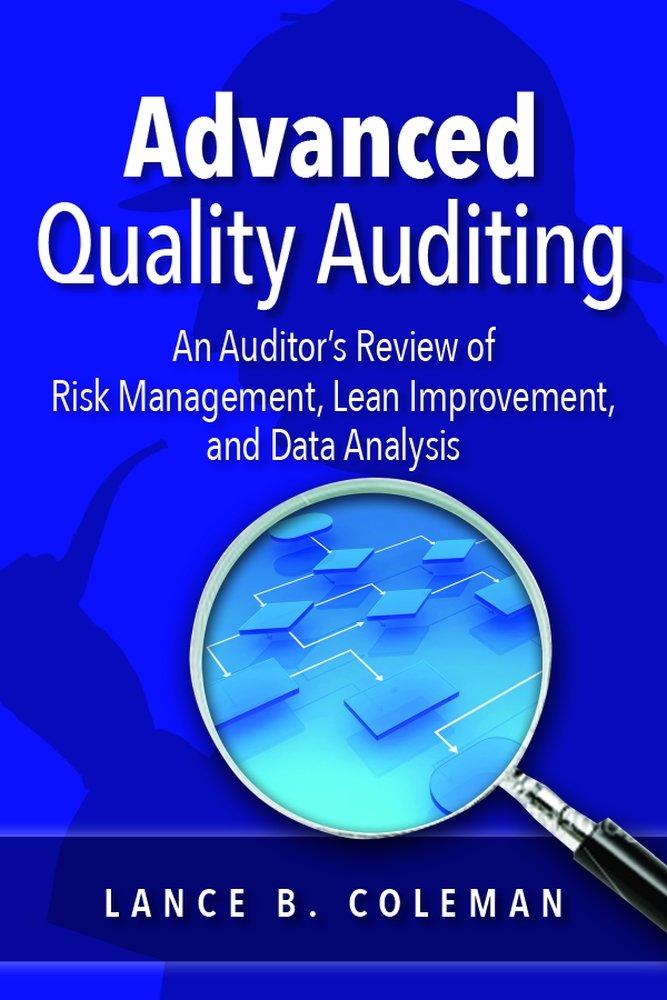Question
December 31, 2016 Assets Current assets: Cash $ 46,200 Accounts receivable (net) 260,000 Raw materials inventory (4,500 yards) 11,250 Finished goods inventory (1,500 units) 32,250
| December 31, 2016 | ||||||
| Assets | ||||||
| Current assets: |
|
|
|
|
|
|
| Cash | $ | 46,200 |
|
|
|
|
| Accounts receivable (net) |
| 260,000 |
|
|
|
|
| Raw materials inventory (4,500 yards) |
| 11,250 |
|
|
|
|
| Finished goods inventory (1,500 units) |
| 32,250 |
|
|
|
|
| Total current assets |
|
|
| $ | 349,700 |
|
| Plant and equipment: |
|
|
|
|
|
|
| Buildings and equipment |
| 900,000 |
|
|
|
|
| Accumulated depreciation |
| (292,000 | ) |
|
|
|
| Plant and equipment, net |
|
|
|
| 608,000 |
|
| Total assets |
|
|
| $ | 957,700 |
|
| Liabilities and Stockholders Equity | ||||||
| Current liabilities: | ||||||
| Accounts payable |
|
|
| $ | 158,000 |
|
| Stockholders equity: |
|
|
|
|
|
|
| Common stock | $ | 419,800 |
|
|
|
|
| Retained earnings |
| 379,900 |
|
|
|
|
| Total stockholders equity |
|
|
|
| 799,700 |
|
| Total liabilities and stockholders equity |
|
|
| $ | 957,700 |
|
The companys chief financial officer (CFO), in consultation with various managers across the organization has developed the following set of assumptions to help create the 2017 budget:
- The budgeted unit sales are 12,000 units, 37,000 units, 15,000 units, and 25,000 units for quarters 1-4, respectively. Notice that the company experiences peak sales in the second and fourth quarters. The budgeted selling price for the year is $32 per unit. The budgeted unit sales for the first quarter of 2018 is 13,000 units.
- All sales are on credit. Uncollectible accounts are negligible and can be ignored. Seventy-five percent of all credit sales are collected in the quarter of the sale and 25% are collected in the subsequent quarter.
- Each quarters ending finished goods inventory should equal 15% of the next quarters unit sales.
- Each unit of finished goods requires 3.5 yards of raw material that costs $3.00 per yard. Each quarters ending raw materials inventory should equal 10% of the next quarters production needs. The estimated ending raw materials inventory on December 31, 2017 is 5,000 yards.
- Seventy percent of each quarters purchases are paid for in the quarter of purchase. The remaining 30% of each quarters purchases are paid in the following quarter.
- Direct laborers are paid $18 an hour and each unit of finished goods requires 0.25 direct labor-hours to complete. All direct labor costs are paid in the quarter incurred.
- The budgeted variable manufacturing overhead per direct labor-hour is $3.00. The quarterly fixed manufacturing overhead is $150,000 including $20,000 of depreciation on equipment. The number of direct labor-hours is used as the allocation base for the budgeted plantwide overhead rate. All overhead costs (excluding depreciation) are paid in the quarter incurred.
- The budgeted variable selling and administrative expense is $1.25 per unit sold. The fixed selling and administrative expenses per quarter include advertising ($25,000), executive salaries ($64,000), insurance ($12,000), property tax ($8,000), and depreciation expense ($8,000). All selling and administrative expenses (excluding depreciation) are paid in the quarter incurred.
- The company plans to maintain a minimum cash balance at the end of each quarter of $30,000. Assume that any borrowings take place on the first day of the quarter. To the extent possible, the company will repay principal and interest on any borrowings on the last day of the fourth quarter. The companys lender imposes a simple interest rate of 3% per quarter on any borrowings.
- Dividends of $15,000 will be declared and paid in each quarter.
- The company uses a last-in, first-out (LIFO) inventory flow assumption. This means that the most recently purchased raw materials are the first-out to production and the most recently completed finished goods are the first-out to customers.
Required:
1. Calculate the following budgeted figures for 2017:
a. The total fixed cost.
b. The variable cost per unit sold.
c. The contribution margin per unit sold.
d. The break-even point in unit sales and dollar sales.
e. The margin of safety.
f. The degree of operating leverage
2. Prepare a budgeted variable costing income statement for 2017. Stop your computations at net operating income.
Step by Step Solution
There are 3 Steps involved in it
Step: 1

Get Instant Access to Expert-Tailored Solutions
See step-by-step solutions with expert insights and AI powered tools for academic success
Step: 2

Step: 3

Ace Your Homework with AI
Get the answers you need in no time with our AI-driven, step-by-step assistance
Get Started


